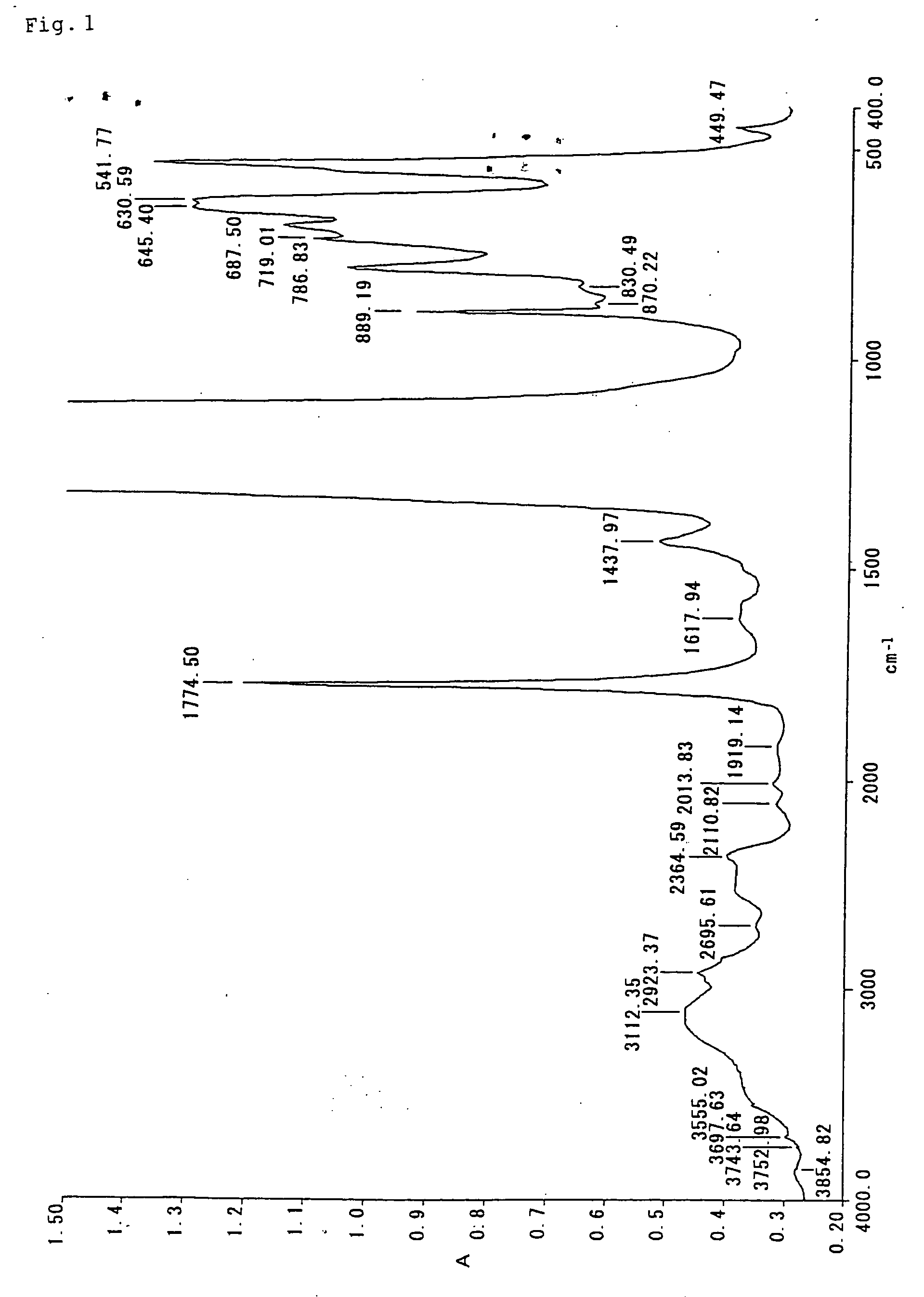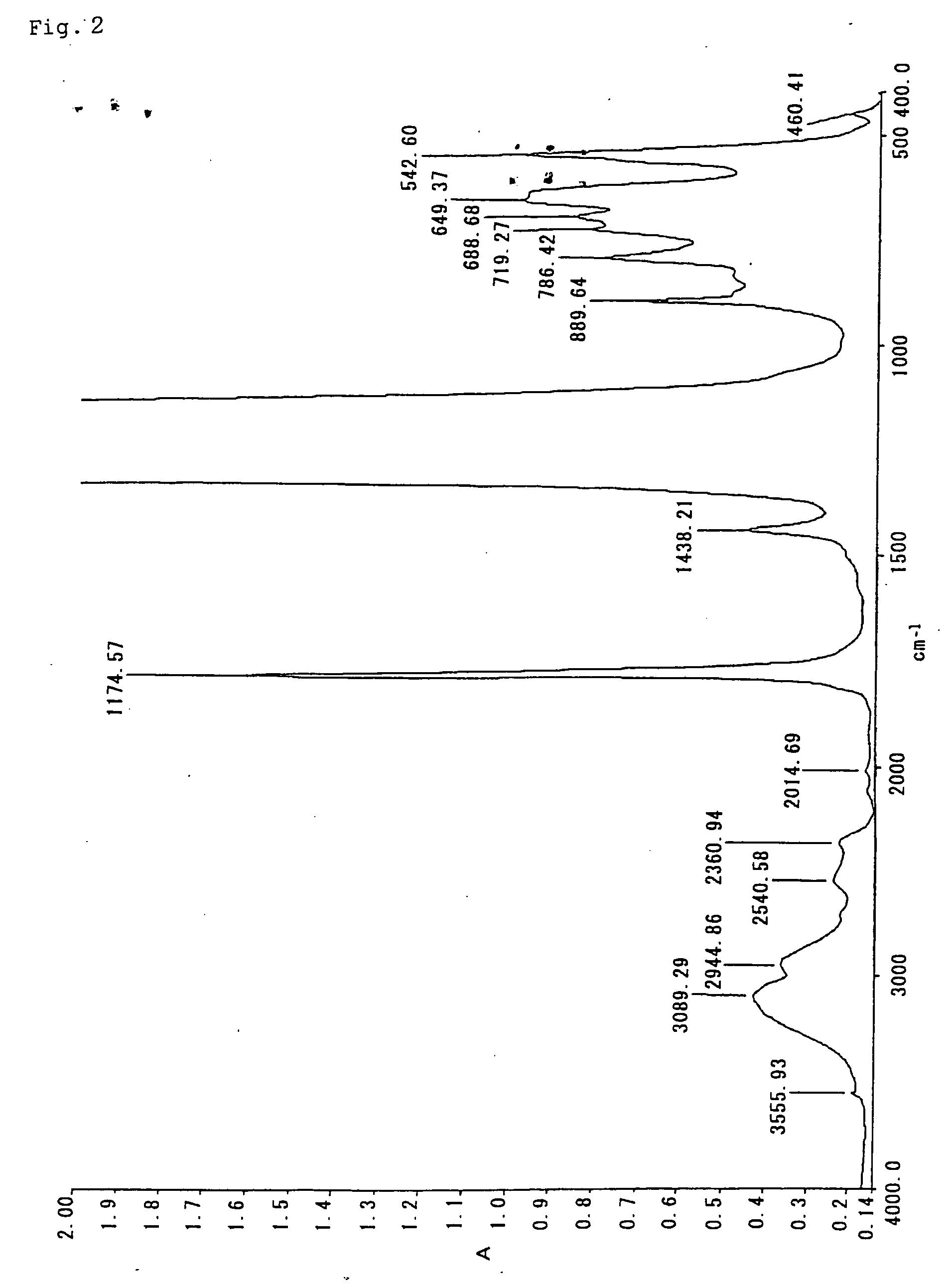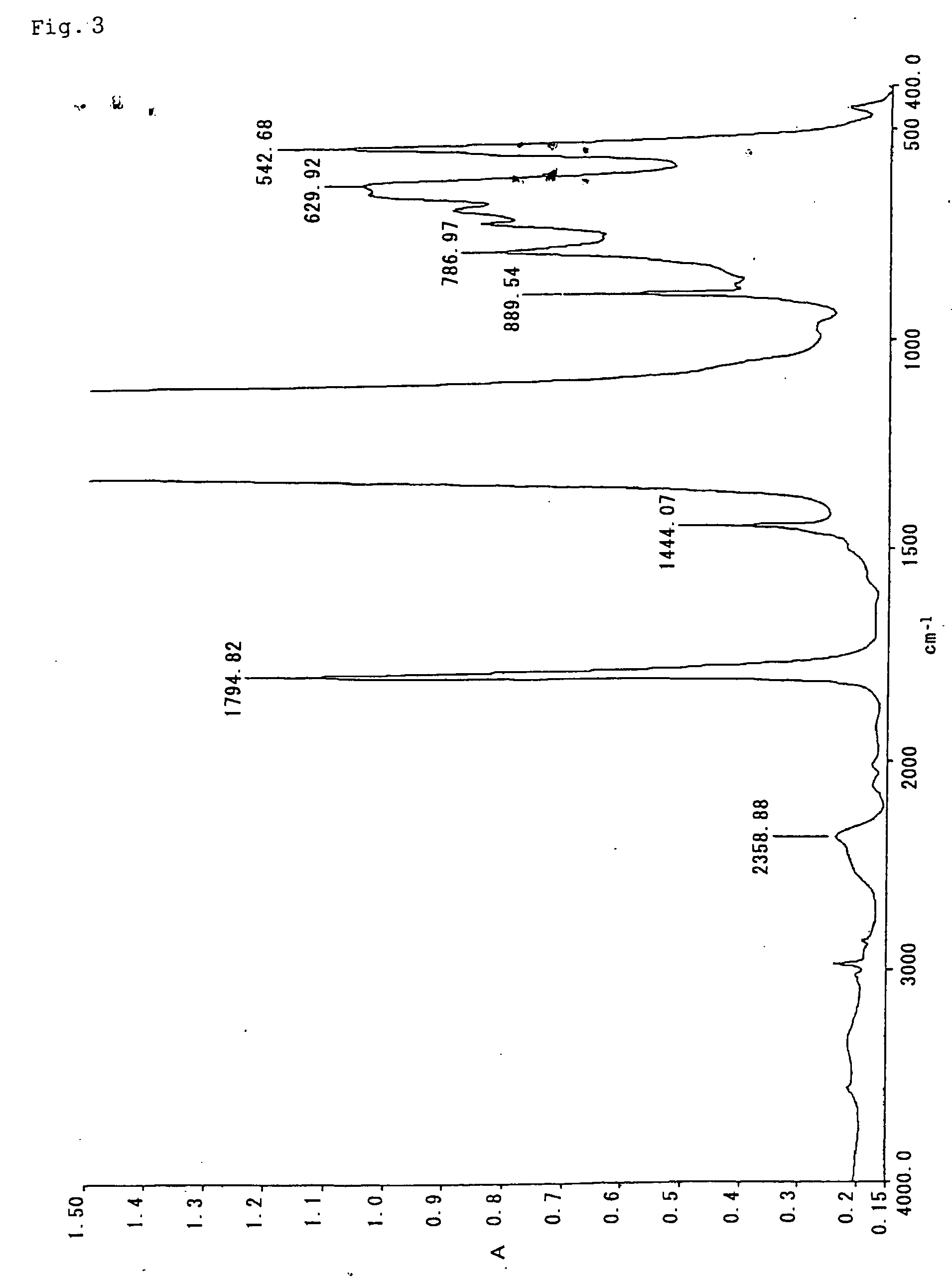Fluorocopolymer, process for producing fluorocopolymer, fluorocopolymer curable composition, and cured object
a technology of fluoropolymer and curable composition, applied in the direction of coatings, etc., can solve the problems of difficult to obtain shaped objects with complicated geometries, process cannot be simplified, and limited mode of utilization, so as to achieve good processability and low cost
- Summary
- Abstract
- Description
- Claims
- Application Information
AI Technical Summary
Benefits of technology
Problems solved by technology
Method used
Image
Examples
example 1
[0232] A stainless steel autoclave of 500 cc capacity without an ignition source was charged with 250 ml of pure water, 2.5 g of CF3CF2CF2OCF(CF3)CF2OCF(CF3)COONH4, and, as a pH control agent, 0.023 g of disodium hydrogenphosphate and the oxygen was removed by nitrogen purging.
[0233] Then, under stirring at 600 rpm, the temperature was raised to 80° C. and a TFE / PMVE mixture gas of TFE:PMVE=25:75 (mol:mol) was admitted under pressure to an internal pressure of 0.2 MPa·G. Then, 0.083 g of the initiator ammonium persulfate [APS] was dissolved in 5 ml of water and the solution was introduced into the autoclave to initiate the polymerization reaction. The internal pressure fell with the progress of polymerization so that at the time-point when it had dropped to 0.18 MPa·G, a TFE / PMVE mixture gas of TFE:PMVE=60:40 (mol:mol) was introduced to cause the internal pressure to return to 0.22 MPa·G. This procedure was repeated, and every 3 hours from the start of polymerization, the autoclave...
example 2
[0241] Except that 0.392 g of potassium persulfate [KPS] in lieu of APS as the initiator was dissolved in 10 ml of water and added and that the polymerization initial pressure was set to 0.4 MPa·G, the polymerization pressure to 0.38 to 0.42 MPa·G, and the polymerization time to 6 hours, the procedure of Example 1 was otherwise faithfully followed to carry out the polymerization.
[0242] At 3 hours after the start of polymerization, the total pressure drop due to polymerization was 0.37 MPa. After 6 hours of polymerization, the total pressure drop was 0.52 MPa, and 309.9 g of an emulsion having a solids concentration of 2.8 mass % was obtained. The pH of the emulsion was measured with pH meter MP220 (™, Mettler Toledo).
example 3
[0243] Except that 8 g of 1N-KOH was added at 3 hours after the start of polymerization, the polymerization reaction was carried out in otherwise the same manner as in Example 2 and the pH was measured. At 3 hours after the start of polymerization and before the addition of KOH, the total pressure drop due to polymerization was 0.35 MPa, and the pH of the emulsion was 2.73. At 6 hours after the start of polymerization, the total pressure drop was 0.86 MPa, and 303.8 g of an emulsion having a solids concentration of 3.7 mass % was obtained. The pH of this emulsion was 3.77. Then, the coagulation, separation and drying were carried out in the same manner as in Example 1 to obtain 0.83 g of a fluorocopolymer which was syrupy at room temperature.
[0244] From the results obtained in Example 2 and Example 3, it was found that compared with Example 2 in which KPS was supplementally added 3 hours after the start of polymerization and KOH was not added, Example 3 in which KPS was supplementa...
PUM
| Property | Measurement | Unit |
|---|---|---|
| temperature | aaaaa | aaaaa |
| viscosity | aaaaa | aaaaa |
| viscosity | aaaaa | aaaaa |
Abstract
Description
Claims
Application Information
 Login to View More
Login to View More - R&D
- Intellectual Property
- Life Sciences
- Materials
- Tech Scout
- Unparalleled Data Quality
- Higher Quality Content
- 60% Fewer Hallucinations
Browse by: Latest US Patents, China's latest patents, Technical Efficacy Thesaurus, Application Domain, Technology Topic, Popular Technical Reports.
© 2025 PatSnap. All rights reserved.Legal|Privacy policy|Modern Slavery Act Transparency Statement|Sitemap|About US| Contact US: help@patsnap.com



